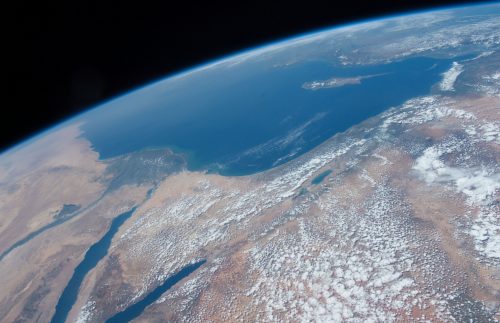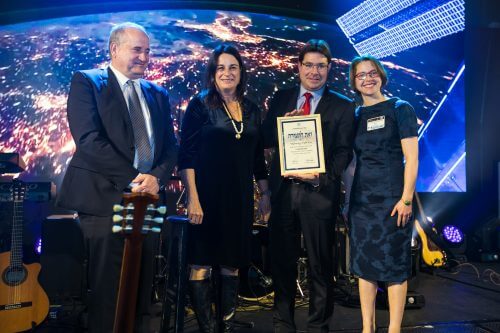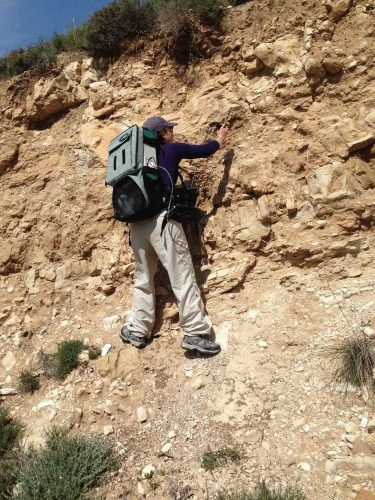A new study reveals that the lead level in some soils in the Jerusalem area reaches 18 times the recommended level. Other areas in Israel where higher than recommended levels of heavy metals were found in the soil are the industrial area in Haifa and the Ramat Hovav area in the south. For the research, Dr. Lunia Friedlander won a Ramon scholarship from the Ministry of Science, and she is now developing a method to complete the data also using satellite photographs from space.

A new study by Dr. Lunia Friedlander, presented at the Israel Space Week events, tested soil samples from various regions in Israel and around the world and measured the levels of heavy metal pollution. Now the researcher is developing a method to supplement the data also using satellite photographs from space. The research, for which the researcher won a Ramon scholarship from the Ministry of Science this week, reveals that the level of lead in some soils in the Jerusalem area reaches 7,000 parts per million, while the recommended limit for lead in soil is 400 parts per million - 18 times the recommended level. Other areas in Israel where higher than recommended levels of heavy metals were found in the soil are the industrial area in Haifa and the Ramat Hovav area in the south.
Excessive exposure to heavy metals in the soil, in the groundwater and in the emission of particles into the air cause health problems in humans. Acute lead poisoning can cause blindness, kidney failure and gastrointestinal problems. Small children are especially vulnerable to this since they like to play in the dirt and put their hands in their mouths. Chronic exposure causes developmental delays and behavioral problems.
"Heavy metals pollute the environment through industry, mining and chemicals, which for decades were weakly controlled and continue to be uncontrolled in areas where there is no regulated waste treatment," explains Dr. Friedlander. "It is estimated that the source of the pollution comes from people and industries that throw waste in uncontrolled areas, for example as a result of burning cables, industrial effluents and even scrap cars. Most infections are caused by lack of awareness of the issue. Finding ways to dispose of polluting effluents and recycling methods for industry, at the same time as promoting health research and locating the polluted places will help to eradicate the problem."

So far, Dr. Friedlander, who was awarded the scholarship this week by Science Minister Ofir Akunis as part of the Space Week events, has collected data on areas contaminated by heavy metals with the aim of locating them by sampling the lead concentration from the soil. But this method has many disadvantages that require, for example, special equipment and are limited to the sampling location only.
The new method that Dr. Friedlander is developing is based on the relationship between samples from the field in polluted places and satellite images of those places. The laboratory results are obtained by measuring changes in soil properties by comparing the interaction of normal soil with light waves versus the interaction of contaminated soil with light waves. Through a combination of the laboratory results and satellite images, the researcher will try to find a reliable match between the results of the pollution and its concentration in the laboratory tests and the pollution discovered from the analysis of the multispectral photographs. The results of the research will lead to greater use of satellite imagery to identify contaminated areas without the need for field and laboratory work. Her work will give government regulators a new tool to monitor land for potential heavy metal contamination.
According to Dr. Friedlander, the first step is to warn the local community to limit their exposure to the sources of contamination. In the second step, the contaminated soil must be removed and replaced with clean soil or biological methods must be used such as planting species of plants or crops that can remove heavy metals from the soil. Remote sensing enables both the first step to monitor infections and the follow-up of previously treated, contaminated areas.

The research that Dr. Friedlander will do as part of the Ramon scholarship will expand the work she did in collaboration with her colleagues at Ben-Gurion University of the Negev: Dr. Jacob Garev from the Desert Research Institute in Sde Boker and Prof. Noam Weisbrod from the Zuckerberg Institute for Water Research in Sde Boker. In her new research, Dr. Friedlander will work in the remote sensing and planetary imaging laboratory of Prof. Dan Blumberg from Ben Gurion University of the Negev.
See more on the topic of Israeli Space Week:
